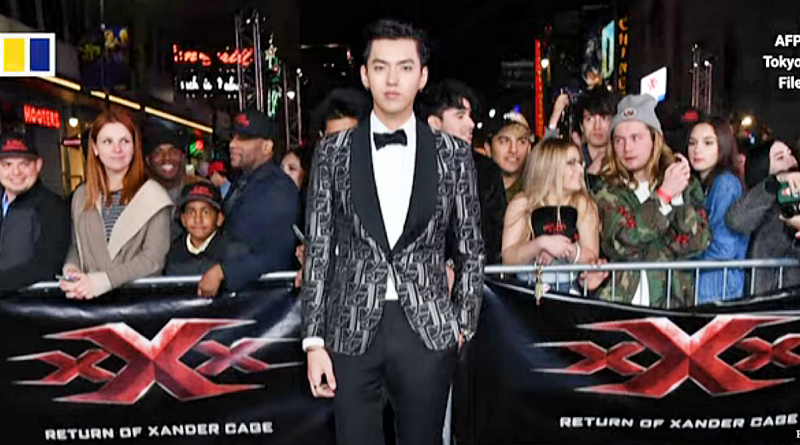Maclean’s Magazine:The Rise and Fall of a Chinese-Canadian Pop Star
In 2008, Wu disappeared suddenly from Point Grey. His classmates didn’t know where he went or what happened to him. Most wouldn’t see him again until 2012, when he resurfaced in a music video not as Kevin Li, but as Kris Wu—a newly minted K-pop idol.

Wu came of age as Korean pop, or K-pop, was sweeping the globe. The worldwide export of South Korean pop culture—known as hallyu—became the backbone of the country’s soft power beginning in the 2000s. In 2004, the K-pop industry generated US$1.87 billion; by 2019, it was worth US$12.3 billion.
When Wu left his Vancouver high school, K-pop was just beginning to make waves in the global music scene. Hugely popular bands like Big Bang, Super Junior and Girls’ Generation were the ancestors of current mega-acts like BTS and Blackpink. The K-pop machine concocted the perfect formula for spawning viral hits, producing songs that were heavy on repetition, catchy hooks and easy-to-copy dance moves, with a few lines of English sprinkled in. The K-pop machine also had one other crucial ingredient: a battalion of young, ready-made, so-called “idols” at its disposal.
In the business world, South Korea is known for its chaebols: the mammoth, family-run conglomerates like Samsung, LG and Lotte that dominate Korean industry. The K-pop world has chaebols of its own. A handful of entertainment agencies write the rules of the industry and fight for new talent. The so-called Big Four labels are SM Entertainment, YG Entertainment, JYP Entertainment and HYBE, all of which run “idol” academies where young people aged 12 to 24 train in singing, dancing and rapping, all in the hopes of achieving K-pop stardom.
By the mid 2010s, K-pop houses had embarked on a new strategy: scouring the globe for non–South Korean talent in a bid to expand their international fanbases. Entertainment companies looked for young talent in Asia—China, Taiwan, Thailand and Japan—as well as in North America. Agencies like SM held American Idol–like open auditions in big cities around the world to attract foreign-born recruits. On any given audition day, thousands of young people would line up for hours to get a minute in front of agency judges. Canadian cities with large Asian diaspora populations, like Vancouver and Toronto, were especially ripe for recruitment in North America. Henry Lau, for instance, a Canadian of Chinese heritage, auditioned for SM on a whim in Toronto in 2006. He was offered a contract after delivering a performance of Vivaldi on violin that incorporated popping dance moves.
In 2007, when Wu was just shy of 17, he accompanied a friend to SM’s global auditions in Vancouver. Wu passed the Vancouver tryouts, then made it through several subsequent rounds. Eventually, he was offered an idol training contract in South Korea’s capital. K-pop training contracts typically last from two to four years, during which would-be idols receive lodging and intensive training in singing, dancing, acting and rapping, all in the hopes of being selected to form part of a pre-fab K-pop group.
In the winter of 2007, Wu and his mom visited Seoul to tour the SM buildings where its idols trained. On that trip, he also met his fellow trainees. They didn’t see or hear from him for eight months after that. Then, in the summer of 2008, Wu returned to SM headquarters as a new person: he sported a new haircut, his chin looked shorter, his jaw no longer protruded and his cheeks seemed subtly fuller in all the right places. One source I spoke to, who trained with Wu in Seoul, alleged that SM paid for his plastic surgery and then shuttled him back to Canada to recover for eight months. “The less exposed he was as the old Kris, the better it was for the agency,” the source said.
During his training with SM, Wu lived with dozens of guys, aged 17 to 20, in shared dorm rooms. The building was next door to SM headquarters in Gangnam, the trendy neighbourhood in Seoul. On a regular weekday, trainees took performance classes, as well as studying the proper ways to speak in public—all the skills required to become an idol. Kevin Shin was Wu’s fellow trainee and best friend during this time. He says they trained from 11 a.m. to 10 p.m., seven days a week. Trainees’ days didn’t end with their lessons: they were expected to keep up with their school work and practise what they had learned in class in their downtime.
Many former idols allege that SM monitored trainees’ diets closely and pressured the teens to stay below a certain weight. Shin, who was naturally thin, had free rein to eat whatever he liked. Other kids would only eat boiled eggs and drink water. The training was difficult but, as Shin says, “it was kind of self-inflicted.” He explains: “We signed on the dotted line to become a K-pop star. You gotta put in the work, right?” Wu, meanwhile, found the training schedule gruelling. “Every single day, we were going to work. We lived in the same dorm, went to the company to train, then went back to sleep. I did that for four years straight,” he has said.





